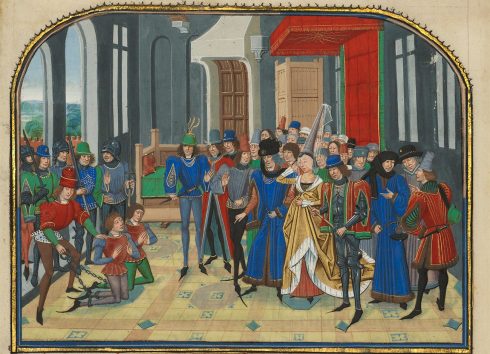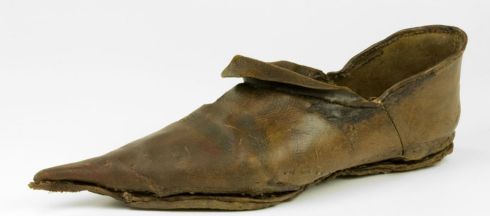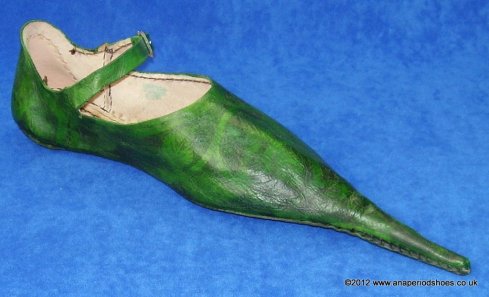
Lydia Ordering the Death of Her Sons (Loyset Liédet and Pol Fruit, ca. 1467–72), Tempera colors and gold leaf on parchment,
Let’s take a break from parade floats, summer flowers, and ice cream artwork to renew our appreciation of all things Gothic. Today’s post involves taking a step back in time to check out the footwear of yore–namely those astonishing pointy Gothic shoes which you see in medieval illumination (like the horrifying Game Of Thrones-ish painting above). Those shoes don’t just exist in ancient artworks and period dramas, specialty cobblers still make them. Here are some photos of Gothic-style footwear which you can buy right now online!

Long-toe Suede Poulaines from armstreet.com





I like all of those, but that green pair is particularly splendid! I would totally wear those if I was accepted into Hogwarts or dragged into a time portal. But what is the story with those toes? Why did lordly fops of the 12th-15th century wear these extreme pointy elvish-looking shoes? The fashion spread throughout northwest Europe, but it originated in Poland (which was going through a sort of golden age) which is why such shoes are called are called “Poulaines” or “Crakows.” The toes were originally filled with moss or other pre-industrial packing materials in order to hold their shape. As the toes became more elaborate and more curved, architectural internal elements made of cork or leather became necessary so they would hold their shape.

I wish I could tell you some satisfying tale of how the pointy toes poked venomous snakes out of the way or helped lords walk on tippy-toe over muddy peasants or something, however, the reason footwear looked as it did then, was much the same as now: namely impractical shoes betokened status. A vast pan-European network of conspicuous consumption existed in the high middle ages and it was a big part of how the elites “kept score.”

So Crakows with their long poulain toes were apparently the Manolo Blahniks of their day. I will keep looking for more to the story, but it seems like this might be a classic case of the things we do for fashion. Don’t worry though, we are not done with Gothic shoes: there is more to come from eras much more recent and familiar. Just stay tuned to Ferrebeekeeper and keep on your toes!


2 comments
Comments feed for this article
July 17, 2019 at 7:48 PM
Calendar Girl
I would totally wear the green pair period
July 24, 2019 at 4:49 PM
Wayne
Hahahaha Agreed: these shoes need to stage a comeback. If we can have “brothel-creepers” walking the modern Earth we can have crackowes.